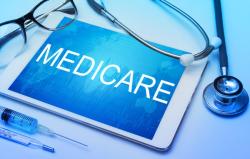© 2025 MJH Life Sciences™ and The Center for Biosimilars - Biosimilars, Health Economics & Insights. All rights reserved.
Report: Conflicting Guidelines, Rebate Walls Are Major Factors Determining Biosimilar Uptake
Samsung Bioepis’ most recent biosimilar market report identified inconsistent medical guidelines, challenges with access and rebates, and acute vs chronic treatment duration as major factors influencing biosimilar uptake in the United States.
In the third edition of Samsung Bioepis’ Biosimilar Market Report, the company revealed the 3 biggest factors that are impacting biosimilar uptake in the United States are inconsistencies in medical guidelines, challenges with access and rebate walls, and whether patients have acute or chronic conditions.
The report sought to overview the current state of the US biosimilar market and provide insight into the reasons behind certain market dynamics and the potential impact of government policies on the industry, such as the implementation of the Inflation Reduction Act (IRA).
“The IRA legislation continues to roll forward with many eyes on the potential impact of this legislation on biosimilars. Medicare drug price negotiations are becoming imminent with the…CMS release of the first 10 products to go through the negotiation process. Some of these products have multiple biosimilars in development, ultimately forcing biosimilar developers to strongly analyze the impact of this legislation on the future of biosimilars,” commented Thomas Newcomer, vice president and head of market access at Samsung Bioepis US.
Biosimilars on the medical benefit side have seen modest discounts, with oncology biosimilars (bevacizumab, trastuzumab, rituximab) having 10% to 25% discounts, supportive care agents (pegfilgrastim, filgrastim, epoetin alfa) having 18% to 61% discounts, and immunology/ophthalmology biosimilars (infliximab and ranibizumab) exhibiting 19% to 59% discounts.
The pharmacy benefit side has had a dramatic development since the previous edition of the report, marking the US introduction of 7 adalimumab biosimilars at the beginning of July. Of the 8 total adalimumab biosimilars on the market, 4 have either 2 wholesale acquisition cost (WAC) prices or have launched with both branded and unbranded versions with different list prices, meaning that discounts for adalimumab products range from 5% to 86% below the list price of the reference product (Humira).
“With the launch of the adalimumab biosimilars, the US health care market has seen various biosimilar strategies including dual pricing, interchangeability, and unbranded biologics. This new expansion of biosimilars into products categorized within specialty pharmacy benefits is expected to evolve into a fierce and competitive market that will ultimately drive down US health care costs,” Newcomer highlighted.
In addition, prices for insulin glargine biosimilars/follow-on biologics range from 4% above (Toujeo) to 66% below (unbranded Semglee) the reference product (Lantus) price.
On average, biosimilars have gained 53% market share in the first 3 years (12 quarters) post initial launch; however, each molecule has unique biosimilar uptake. Oncology biosimilars, including pegfilgrastim biosimilars, have experienced the best uptake rates, averaging 75% market share in the first 3 years post-initial launch. Filgrastim and epoetin alfa biosimilars gained 35% market share, and infliximab and insulin glargine products have only captured 11% of the market.
The report noted that guidelines from respected medical societies on biosimilar usage have an important role in shaping provider prescribing decisions. For example, the National Comprehensive Cancer Network (NCCN) Clinical Practice Guidelines are highly regarded in the oncology space and are a large part of why the oncology space has experienced faster growth compared with the inflammatory space.
“The NCCN explicitly states that ‘An FDA-approved biosimilar is an appropriate substitute.’ In contrast, immunology faces a more cautious landscape…. While the ACR [American College of Rheumatology] generally favors biosimilars for new starts, it firmly opposes insurer-mandated forced switching. These varying stances underscore the importance of medical society endorsements in driving or impeding biosimilar adoption,” the report noted.
Treatment duration is very influential because patients with chronic conditions are often reluctant to initiate changes when their conditions are well controlled on a particular medicine, aligning with the ACR’s position on nonmedical switching. However, in oncology, patients are typically on medicines for a short period of time, meaning that newer patients constitute a larger portion of total treatments, leading to higher utilization compared with other therapeutic areas.
In the US, access is key to pharmaceutical use, "grandfathering" helps patients stick to their treatment, while payer reliance on rebates can obstruct cost savings from biosimilars. Boosting biosimilar adoption involves understanding factors like cost, competition, guidelines, treatment duration, and access dynamics, aiding health care professionals in optimizing patient care and cost-efficiency.
“Most would agree that the US health care market has more stakeholders and complex factors than other countries impacting market uptake. Therefore, it may not be possible to define a single correct answer to trends and changes, but in this report, we strive to provide utilization and financial data points so our readers can make their own assessments and interpretations,” Newcomer concluded. “Moving forward, we can anticipate looking into more diverse topics as current markets mature and new biosimilar products enter into new therapeutic areas.
Related Content:



